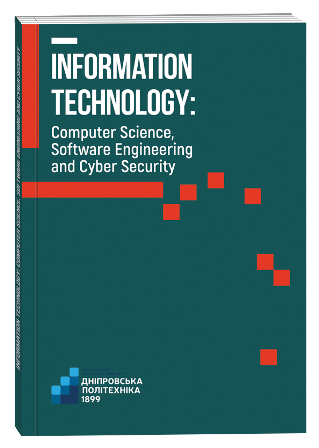FEATURES OF THE APPLIED DIRECTION OF HIGHER MATHEMATICS IN INFORMATION SECURITY
DOI:
https://doi.org/10.32782/IT/2025-1-10Keywords:
higher and applied mathematics in information security, information technologies, information and communication technologies, IT sphere.Abstract
In the context of the digitalization of various aspects of social life, there is an urgent need to update approaches to teaching higher and applied mathematics in information security. The purpose of the study is to identify the features of the applied direction of teaching higher and applied mathematics in information security. To achieve the goal, it was investigated and found that the current direction of diversification of activities in the field of information technologies is their effective use in the design, modernization and development of modern software systems. Research methodology. The methodological principles of the study take into account the concepts of identifying patterns of the applied direction of teaching higher mathematics. The work uses a complex of interrelated scientific methods, in particular, the methods of system analysis, structural-functional and generalization methods are used to identify the features and priorities of ensuring the applied direction of higher mathematics in information security; abstract-logical method, synthesis and extrapolation methods – to substantiate theoretical generalizations, formulate conclusions, develop practical recommendations. The scientific novelty lies in the comprehensive approach to studying the essence and features of ensuring the applied orientation of higher mathematics in information security. It is substantiated that the creation, implementation and updating of information resources requires specialists to have knowledge of higher and applied mathematics in information security. Conclusions. Taking into account current trends and needs of the labor market, higher education institutions need to ensure that higher education applicants acquire a sufficient level of knowledge of higher and applied mathematics that will meet the standards and requirements of professional activity, contribute to the development of information and cyber security, taking into account the needs of society and state priorities in the period of post-war recovery.
References
Спірін О. М., Вакалюк Т. А. Формування інформаційно-комунікаційної компетентності бакалаврів інформатики щодо використання хмаро орієнтованого навчального середовища. Інформаційні технології і засоби навчання: 72(4). с. 226–245. 2019. doi: https://doi.org/10.33407/itlt.v72i4.3262
Капітон А. М. Інформаційно-обчислювальна компетентність майбутніх фахівців з інформаційних технологій. Інформаційні технології і засоби навчання. 93(1). с. 49–67. 2023. doi: https://doi.org/10.33407/itlt.v95i3.5195
Abysova M., Kravchuk M., Hurniak O. Digitalization in university education: didactic aspects. Information Technologies and Learning Tools. 93(1). с. 68–79. 2023. doi: https://doi.org/10.33407/itlt.v93i1.5097
Pokhre S., Chhetri R., Literature A. Review on Impact of COVID-19 Pandemic on Teaching and Learning. Higher Education for the Future. 8(1). 2021. doi: https://doi.org/10.1177/2347631120983481
Bamforth S., Perkin G., Flint J. Understanding the student perspective of Microsoft OneNote as a learning resource in higher education. ICERI2019 Proceedings. 2019. 9838–9847.
Lavi R., Tal M., Dori Y. Perceptions of STEM alumni and students on developing 21st century skills through methods of teaching and learning. Studies in Educational Evaluation, 70. 2021. doi: https://doi.org/10.1016/j.stueduc.2021.101002
Polyviou A., Venters W., Pouloud N. Distant but close: Locational, relational and temporal proximity in cloud computing adoption. Journal of Information Technology. 38. 2023. doi: https://doi.org/10.1177/02683962231186161
Gautam A., Bansal A. Effect of Features Extraction Techniques on Cyberstalking Detection Using Machine Learning Framework. Journal of Advances in Information Technology. 13. 2022. doi: https://doi.org/10.12720/jait.13.5.486-502
WIPO. Global Innovation Index 2022. Sept. 2022. URL: https://www.wipo.int/global_innovation_index/en/2022/
Бондаренко О. І. Кваліфікаційна невідповідність працівників країн ЄС у контексті оволодіння цифровими навичками. Інформаційні технології і засоби навчання. 95(3). с. 1–24. 2023. doi: https://doi.org/10.33407/itlt.v95i3.5195







